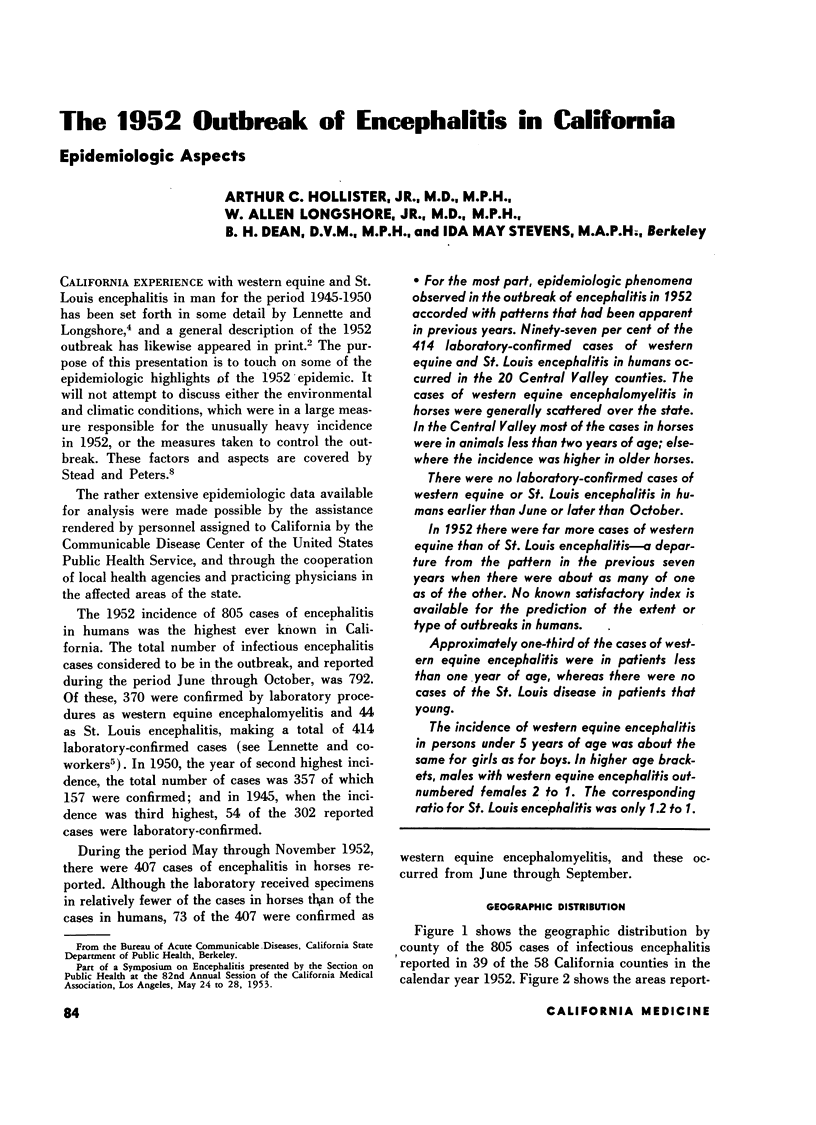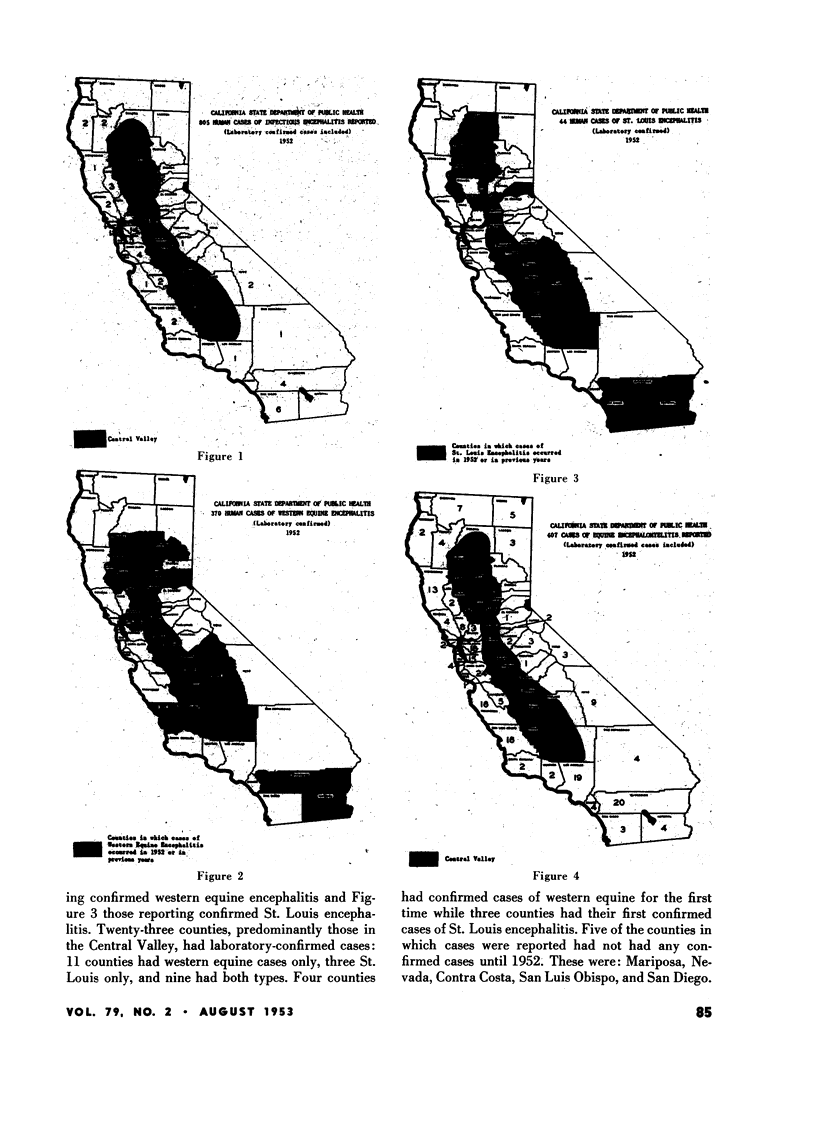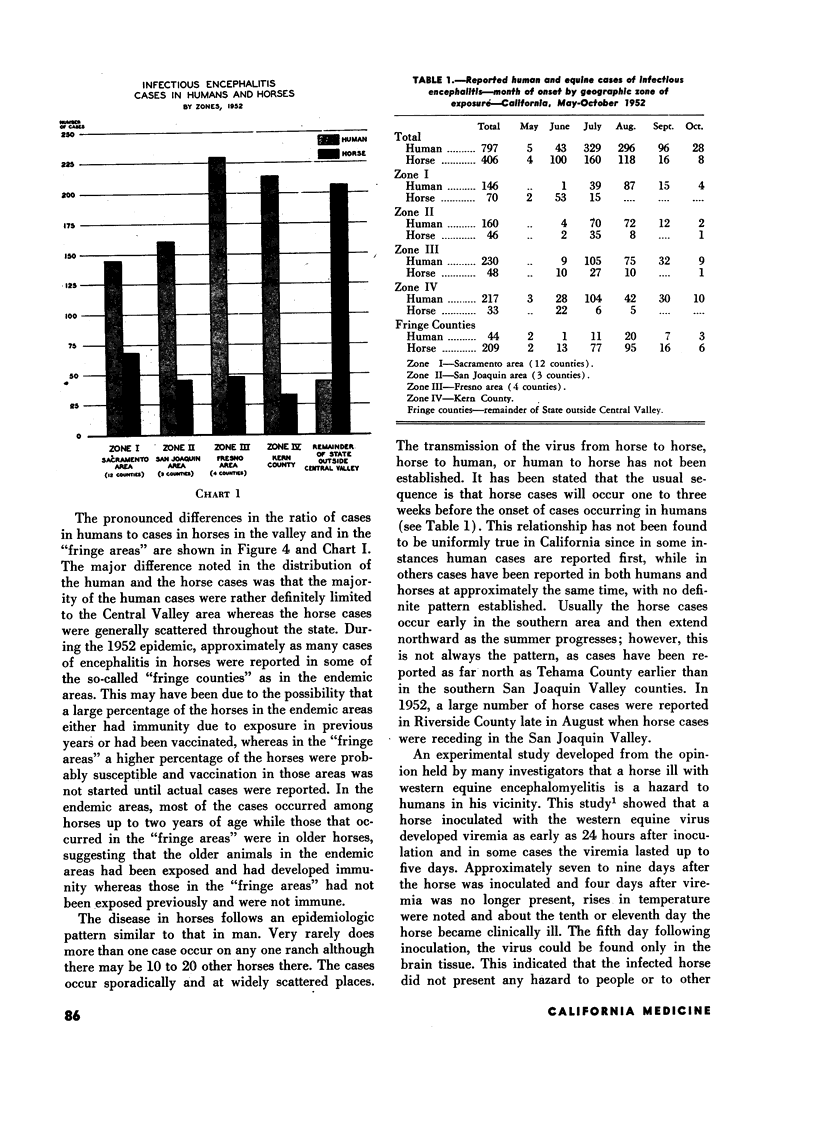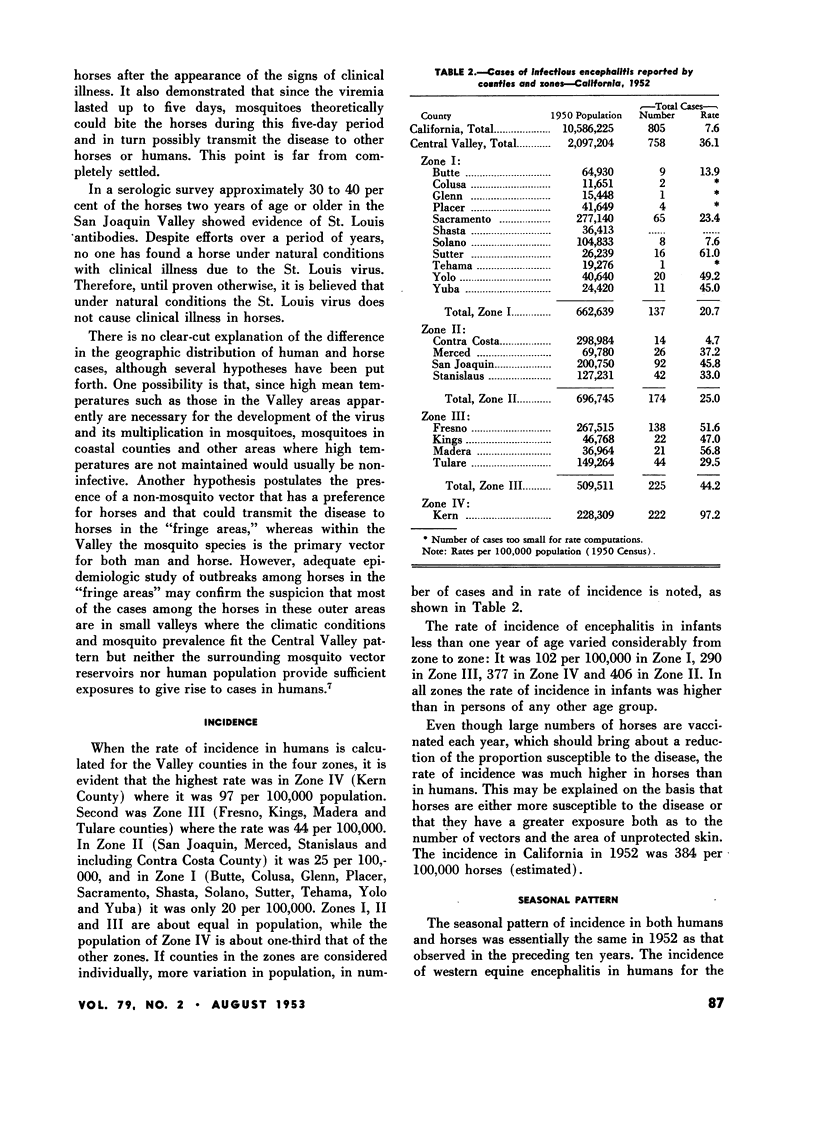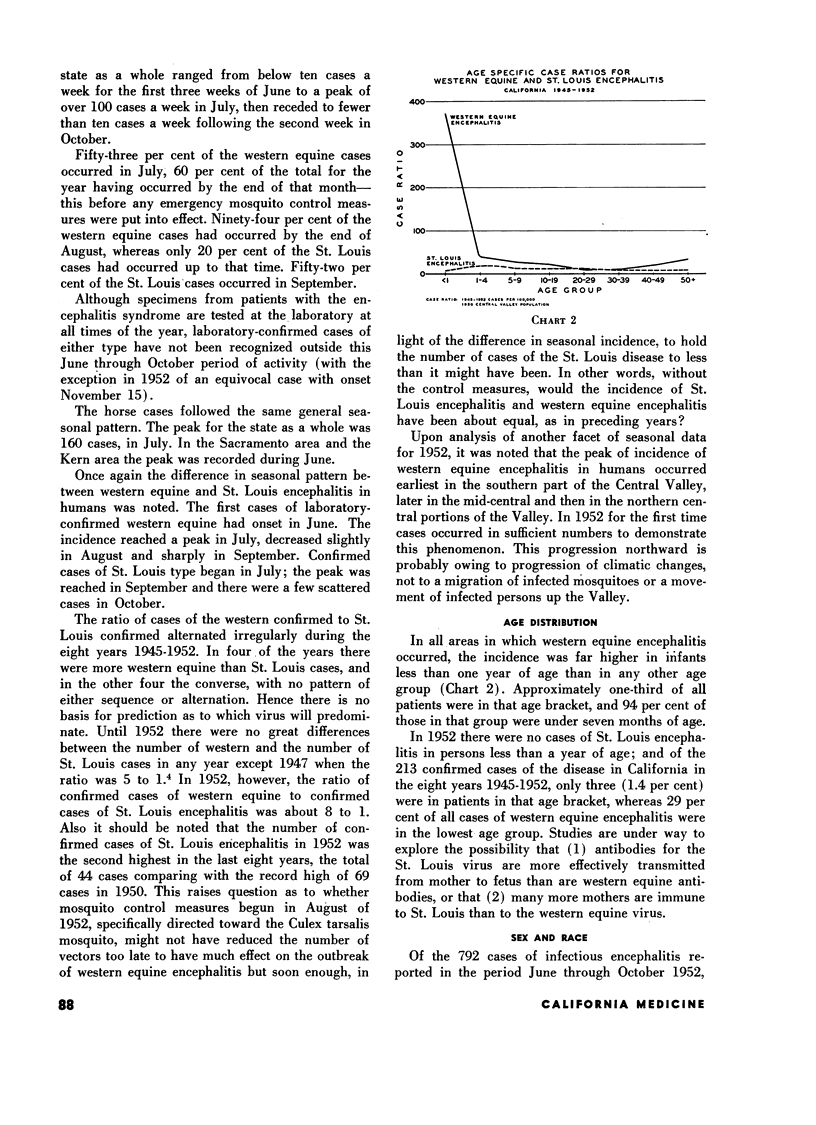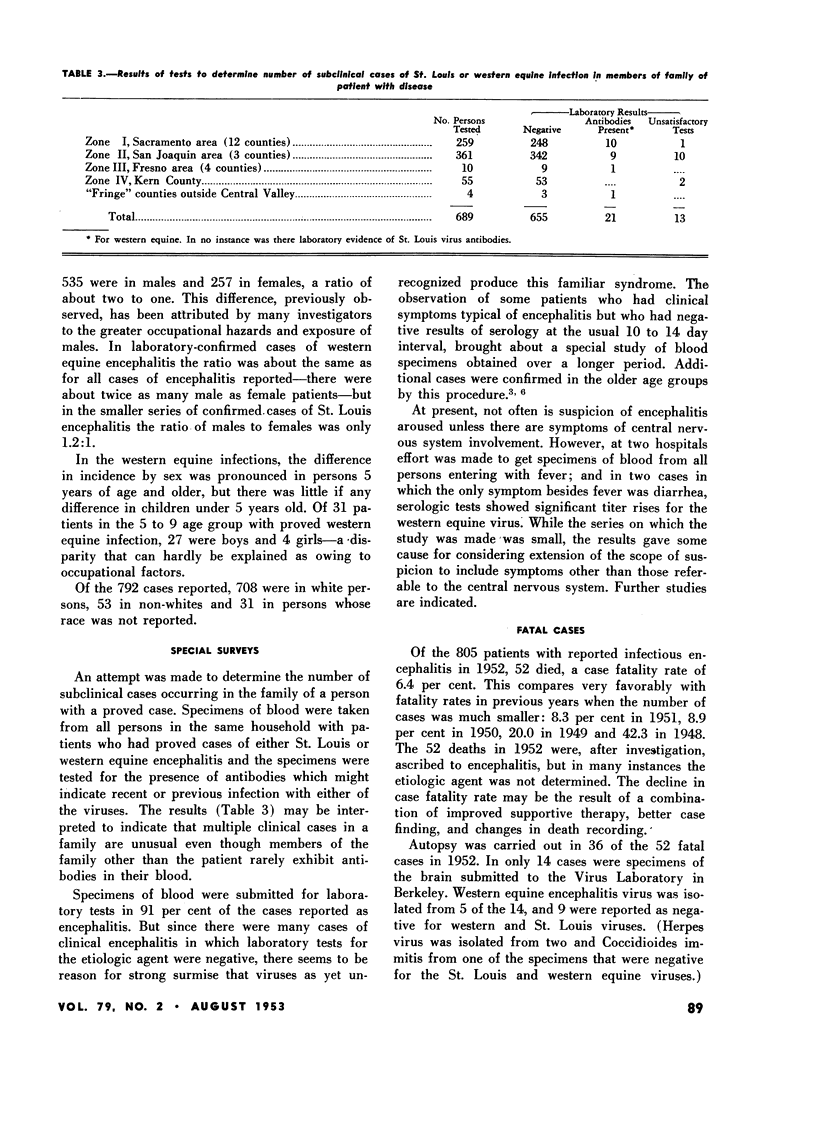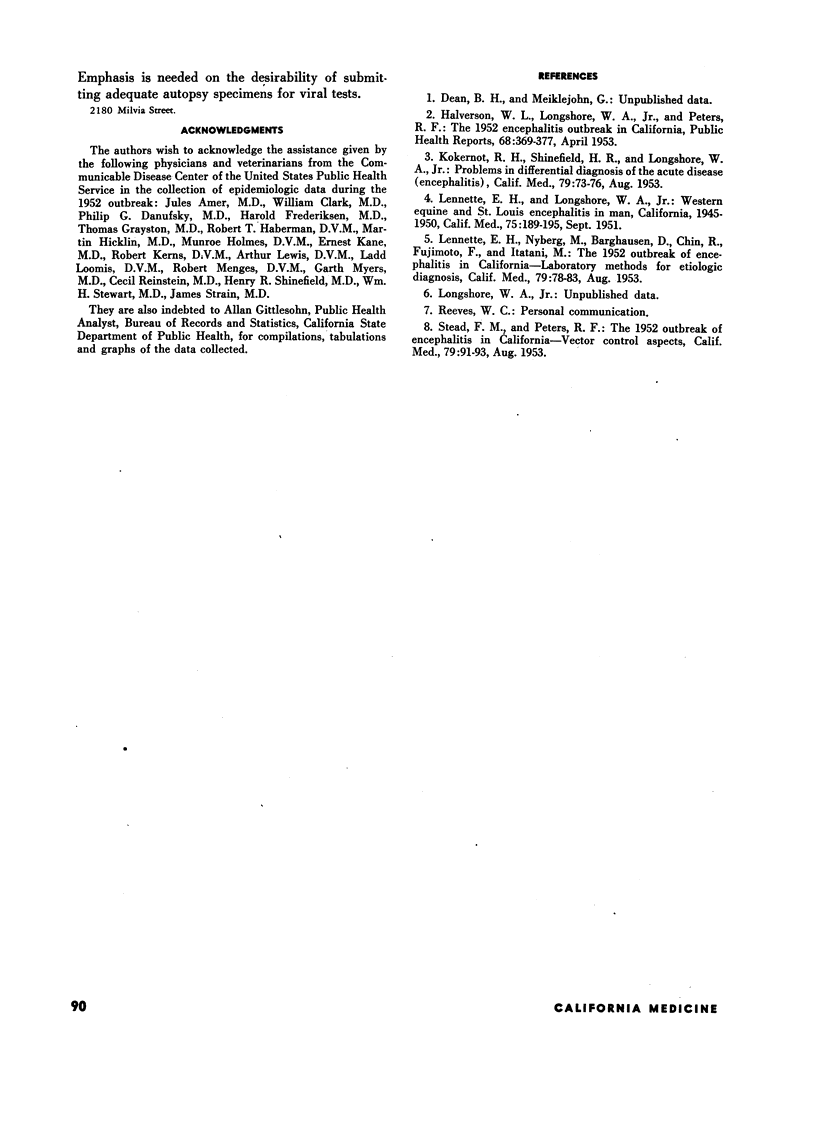Abstract
For the most part, epidemiologic phenomena observed in the outbreak of encephalitis in 1952 accorded with patterns that had been apparent in previous years. Ninety-seven per cent of the 414 laboratory-confirmed cases of western equine and St. Louis encephalitis in humans occurred in the 20 Central Valley counties. The cases of western equine encephalomyelitis in horses were generally scattered over the state. In the Central Valley most of the cases in horses were in animals less than two years of age; elsewhere the incidence was higher in older horses.
There were no laboratory-confirmed cases of western equine or St. Louis encephalitis in humans earlier than June or later than October.
In 1952 there were far more cases of western equine than of St. Louis encephalitis—a departure from the pattern in the previous seven years when there were about as many of one as of the other. No known satisfactory index is available for the prediction of the extent or type of outbreaks in humans.
Approximately one-third of the cases of western equine encephalitis were in patients less than one year of age, whereas there were no cases of the St. Louis disease in patients that young.
The incidence of western equine encephalitis in persons under 5 years of age was about the same for girls as for boys. In higher age brackets, males with western equine encephalitis outnumbered females 2 to 1. The corresponding ratio for St. Louis encephalitis was only 1.2 to 1.
Full text
PDF